
New paper by Dr Jesse Martin challenges the name! 🚨
"We find that the morphology preserved by StW 573 (Little Foot) does not support assigning that specimen to Australopithecus prometheus" 🦴
onlinelibrary.wiley.com/doi/10.1002/...
@palaeotrails.bsky.social
Palaeoanthropology research group led by @martamlahr.bsky.social combining multiple projects that investigate human evolution, largely focused in the Turkana Basin. Administered by the Ng'ipalajem team

New paper by Dr Jesse Martin challenges the name! 🚨
"We find that the morphology preserved by StW 573 (Little Foot) does not support assigning that specimen to Australopithecus prometheus" 🦴
onlinelibrary.wiley.com/doi/10.1002/...
Congratulations 🥂 to @jjrowan.bsky.social for receiving the #PhilipLeverhulmePrize from @leverhulme.ac.uk 🥳🤩!!
So special to have such an amazing #CamBioAnth team in
@cam-archaeology.bsky.social - brilliant, interesting, fun and nice. The best colleagues 😍
www.leverhulme.ac.uk/news/2025PLP


Thrilled to share that our lovely PI, @martamlahr.bsky.social is now officially Professor Marta Mirazón Lahr FBA. Formally admitted at a ceremony at the British Academy yesterday!
Congratulations on this well-deserved recognition and remarkable milestone — here’s to many more!! 🎉
We are hiring a Project Co-ordinator! 🚨
Are you extremely organised with great interpersonal skills?
Able to multitask efficiently?
Interested in African prehistory?
Keen to work with an enthusiastic team?
We want to hear from you!
Closing date: 17 October, 2025

Like you, I've read so many nice things about Jane Goodall's amazing life and legacy today, but this video of the realease of the chimp called Wounda is beyond words ♥️
If only we could find the will to stop destroying the extraordinary natural world around us...
youtu.be/ClOMa_GufsA?...
It's a wrap! #ESHE2025
3 days filled with stimulating discussions in the form of 35 podiums, 33 Pecha Kuchas, 169 posters.
Congratulations to the winners of the student prize - Harmony Hill & Gabriele Russo!
Massive thank you to the organisers for making it all happen.
See you in Burgos next year!
It's a wrap! #ESHE2025
3 days filled with stimulating discussions in the form of 35 podiums, 33 Pecha Kuchas, 169 posters.
Congratulations to the winners of the student prize - Harmony Hill & Gabriele Russo!
Massive thank you to the organisers for making it all happen.
See you in Burgos next year!




Session 9 Podium #ESHE2025
@stephanepeyregne.bsky.social on a new Denisovan genome,
J. Kubat uncovers sexing and phylogeny of M. palaeojavanicus,
E. Veatch reconsiders fire use and behaviour in H. floresiensis,
H. Berghuis on the first subsea H. erectus site in Sundaland


Podium Day 3 #ESHE2025
H. Farrell, R. Sorrentino, C. Ruff, A. Toccacceli, R. Clarke, A. Robles on the architecture of human foot, gait in Dmanisi, dexterous rock climbing in chimps, craniofacial diversity in great apes and so much more!

Poster Session 2 #ESHE2025
83 wonderful posters. 169 in total.
Palaeotrails’ Jesse Martin & @martamlahr.bsky.social on detecting microevolutionary trends in fossil hominin populations.




Podium talks Day 2 #ESHE2025
@jingzhang.bsky.social, K. Bretzke, G. Duller, @armandofalcucci.bsky.social, @giuliagallo.bsky.social, @jonathanreeves.bsky.social present exciting research on AI refits for lithics, use of operculum to push the limits of OSL, fire durations in the MP and so much more!
#ESHE2025
posting on Pecha Kuchas is hard 😅😅😅!




First round of podium presentations at #ESHE2025
Olivia Rivero, Alba Mesa, April Nowell,
@aurelienmounier.bsky.social, Chris Hunt explore everything from cognitive complexity, aDNA in cave art to the lives of teens in the #Palaeolithic and the amazing discoveries at #Shanidar!
Stay tuned!
#ESHE2025
Introduction by @mariesoressi.bsky.social – 14 years of ESHE! 340 participants in Paris 😊!
Welcome by MNHN, hosting: info on major cyber-attack in July, and how challenging it was to organise the meeting (thank you Paris team!!), thanking a number of supporting & funding institutions.
Celebrating our wonderful PI @martamlahr.bsky.social for such an incredible achievement 🎉🍾🥂
19.07.2025 12:04 — 👍 30 🔁 3 💬 2 📌 0Justus Erus Edung was only 25 years old when he discovered Kenyanthropus platyops in a team led by Prof. Meave Leakey in 1999.
This 3.5 million year old “flat-faced” skull quickly grabbed international headlines and changed the course of human evolution.
#fossils #turkana #humanevolution
Had such a fun time learning about species identification, phylogeny and palaeoecology with @deadbovids.bsky.social 🤩🤩
16.07.2025 11:32 — 👍 8 🔁 0 💬 0 📌 0Episode 2: Faunal identification with @deadbovids.bsky.social
Other than identification, tooth wear pattern can give us exciting insights into faunal diet and palaeoecology.
The joy of sorting LSA lithics from Turkana under the guidance of @robfoley.bsky.social
Follow us on Instagram for more www.instagram.com/palaeotrails...
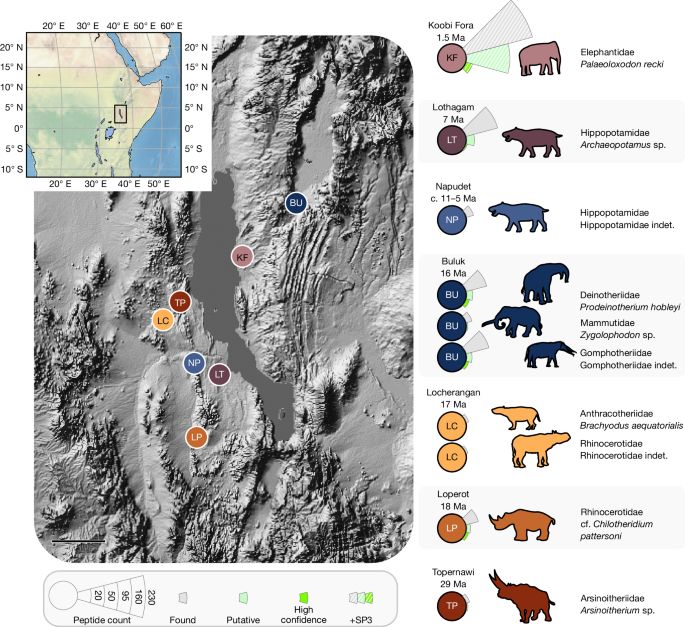
Breaking the barriers! Important new paper by Daniel Green and others discovering 18 million years of proteins of East African mammals!
www.nature.com/articles/s41...
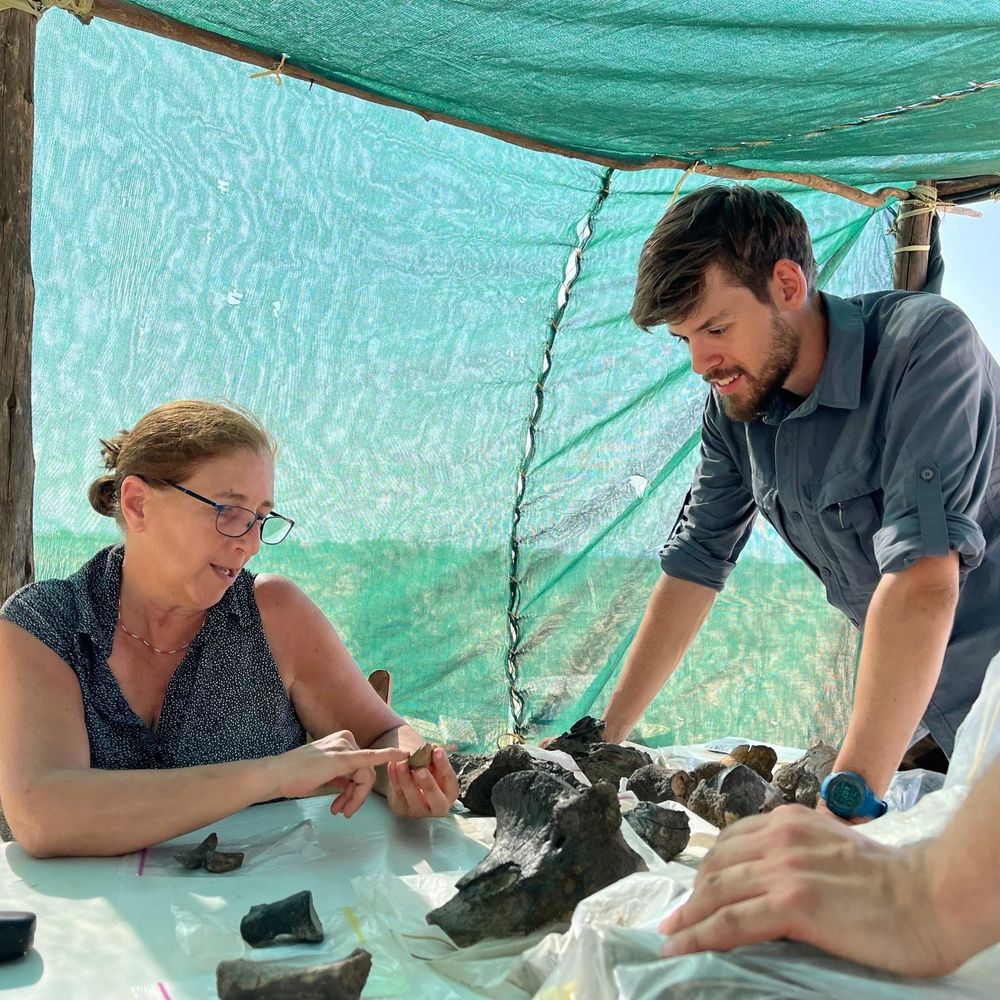
We spend long periods of time in Kenya collecting data in the collections, understanding the landscape and looking for fossils. Picture credits: Sarah Paris
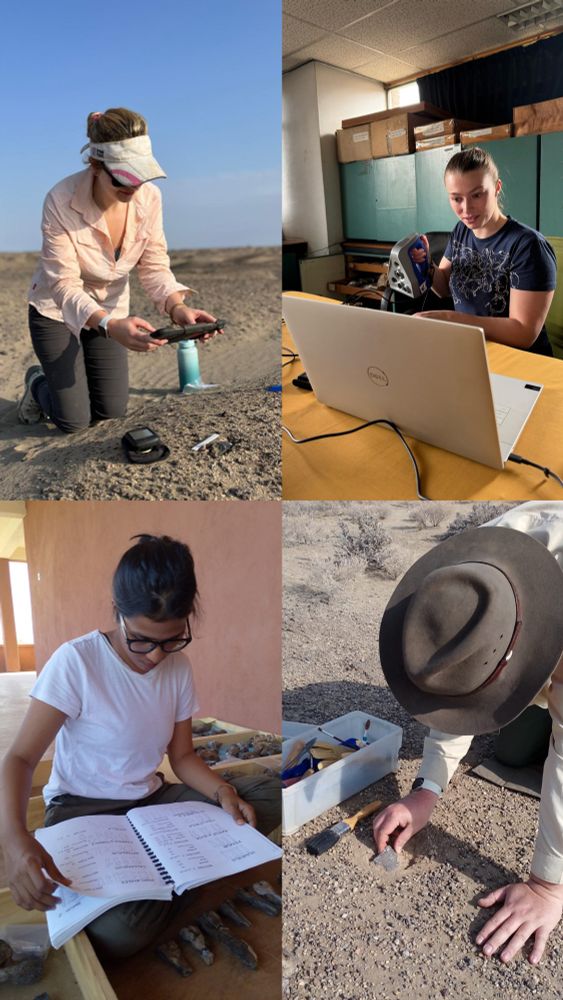
The rest of the year is spent analysing data, honing skills and preparing for upcoming field work. During this time, we develop new methodologies, attend conferences, write papers and discuss our findings Picture credits: Sarah Paris, Eleanor Williams
What does the Ng'ipalajem team do?
Ng’ipalajem, meaning Ancestors in Turkana, is an ERC-funded project.
Led by @martamlahr.bsky.social, the project investigates how the emergence of Homo sapiens is deeply intertwined with Africa’s long-term environmental and ecological history.
#humanevolution
📢 We’re HIRING!
Are you experienced in 3D imaging and geometric
morphometric analysis? Do you have strong organisational and communication skills?
We want to hear from you! Apply below www.jobs.cam.ac.uk/job/51730/
Join our passionate research team exploring Pleistocene African prehistory! 🦴
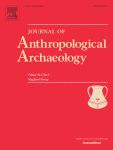
🚨 Who made the Oldowan? - New paper from Eleanor Williams
www.sciencedirect.com/science/arti...
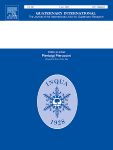
🚨New Paper from Palaeotrails @avantikab.bsky.social
www.sciencedirect.com/science/arti...
🎉 Fantastic new book by Jonathan R. Goodman Invisible Rivals: How we evolved to compete in a cooperative world’ forward by Palaeotrails @robfoley.bsky.social
21.06.2025 07:33 — 👍 9 🔁 2 💬 0 📌 0🚨 More below!!
At Khok Phanom Di, red ochre pigment was applied to most burials. Infants who died around the time of birth were excluded. And yet, they were still buried in the same sacred ground.
What does this tell us about how ancient communities perceived personhood, grief, and belonging?

🚨 New research by Palaeotrails' @sarah-paris.bsky.social
beautifully connects Neolithic infant burials in Thailand with today’s evolving conversations around perinatal loss.
"This isn't just about pigment—it's about belonging."
From ancient ochre to Ronaldo's 7th-minute tribute—grief unites. 🕊️
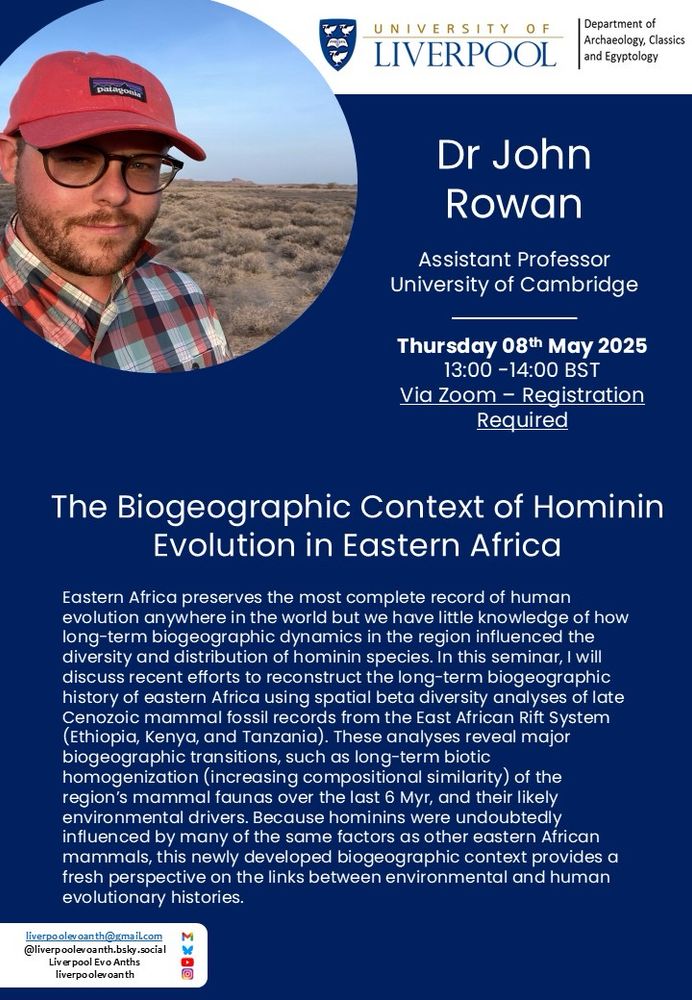
Please join us next week, 8th May 2025, at 13:00 BST, for our final talk of the academic year which will be given by Dr John Rowan, University of Cambridge. More details below 👇
If you would like to attend, please register here: liverpool-ac-uk.zoom.us/meeting/regi...
We hope to see you there!
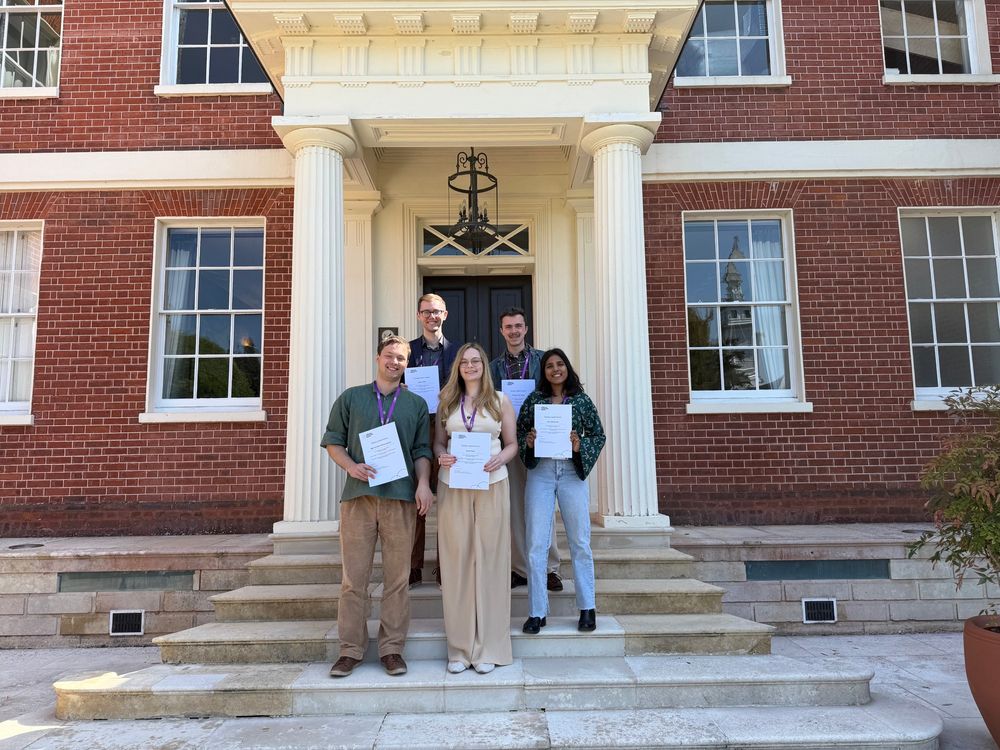
🎉 Members of the Palaeotrails team were recently awarded bursaries to attend this years #HumanEvo25 🧬💀
The team were delighted to participate in the dynamic interdisciplinary programme ranging from genetic 👻 🏜️ 🦠 🧫 to evolutionary 🤰👣⚔️🌍
Thank you @eventswcs.bsky.social